Insects have three distinct body regions or tagmata: the head, thorax, and abdomen. Insects in the order Hymenoptera, suborder Apocrita, to which bees belong, have their first abdominal segment fused to the thorax, as the propodeumpropodeum:
the last segment of the thorax
, and the remainder of the abdomen (abdominal segments 2, 3, and so on) is narrowly connected to this fused region. Therefore, the terms mesosoma (thorax + first abdominal segment) and metasomametasoma:
the posterior part of the body
(remaining abdominal segments) are often used to describe these body regions (Michener 1944Michener 1944:
Michener, C.D. 1944. The distribution of the osmiine bees of the deserts of North America. The American Naturalist 78: 257ndash;266., 1974; Grimaldi and Engel 2005). Here, we use the terms head, thorax (including the propodeumpropodeum:
the last segment of the thorax
), and abdomen, but make the clear distinction when referring specifically to the propodeumpropodeum:
the last segment of the thorax
or metasomal segments (e.g., T1T1:
the segments on the top side of the abdomen, often abbreviated when referring to a specific segment to T1, T2, T3, T4, T5, T6, or T7 represents the first metasomal tergumtergum:
represents the first metasomal tergumtergum:
the segments on the top side of the abdomen, often abbreviated when referring to a specific segment to T1, T2, T3, T4, T5, T6, or T7 and S1S1:
and S1S1:
the plates on the underside of the abdomen, often abbreviated when referring to a specific segment to S1, S2, S3, S4, S5, S6, S7, or S8
 denotes the first metasomal sternum).
denotes the first metasomal sternum).
The figures below show basic bee morphology with emphasis on commonly used diagnostic traits (all illustrations by Morgan Christman). Other, more specific diagnostic traits, such as those to distinguish specific genera or species, are indicated in fact sheets and key images of each group.

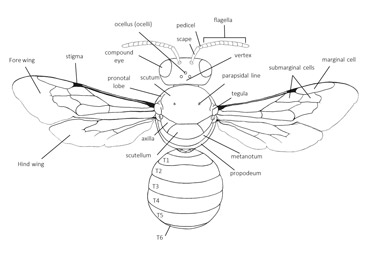

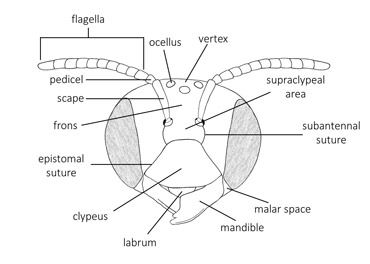
Female and male bees are sexually dimorphicdimorphic:
having two distinct forms
. In general, females can be identified by the presence of scopascopa:
modified hairs for carrying pollen; often branched and dense hairs on the hind-leg, or on the ventral surface of the abdomen in Megachilidae
(a region of dense branched hairs used to harvest pollen) on their hind legs (most bees), abdomen (Megachilidae), or sides of propodeumpropodeum:
the last segment of the thorax
(Andrena). Males lack scopascopa:
modified hairs for carrying pollen; often branched and dense hairs on the hind-leg, or on the ventral surface of the abdomen in Megachilidae
, as they do not collect pollen to provision nests for young. Note that some female bees, however, store pollen in their crop and lack scopascopa:
modified hairs for carrying pollen; often branched and dense hairs on the hind-leg, or on the ventral surface of the abdomen in Megachilidae
, and cleptoparasiticcleptoparasitic:
bees that lay their eggs in the nest cells of bees in other genera. Their larvae depend on the pollen provided by their host. Since cleptoparasitic bees don't provision their own nests, and instead depend on the pollen collected by their host, the females lack pollen collecting hairs. This often gives them a wasp-like appearance.
bees have partially or completely reduced scopascopa:
modified hairs for carrying pollen; often branched and dense hairs on the hind-leg, or on the ventral surface of the abdomen in Megachilidae
.
Female bees have 6 exposed metasomal tergal segments, as well as a stinger (i.e., an ovipositorovipositor:
the tubular egg-laying apparatus of female bees, often referred to as the stinger
that has become modified for defense). Male bees usually have 7 exposed tergal segments, and no stinger. Note that the stinger is not always visible; female stingers may be retracted. Further, males sometimes have a mid-apical projection on T7T7:
the segments on the top side of the abdomen, often abbreviated when referring to a specific segment to T1, T2, T3, T4, T5, T6, or T7 that can be confused for a stinger.
that can be confused for a stinger.
Female bees have 12 antennal segments (including the scapescape:
the basal, and usually the longest, segment of the antennae and pedicelpedicel:
and pedicelpedicel:
the second segment of the antennae, between the scape and flagellum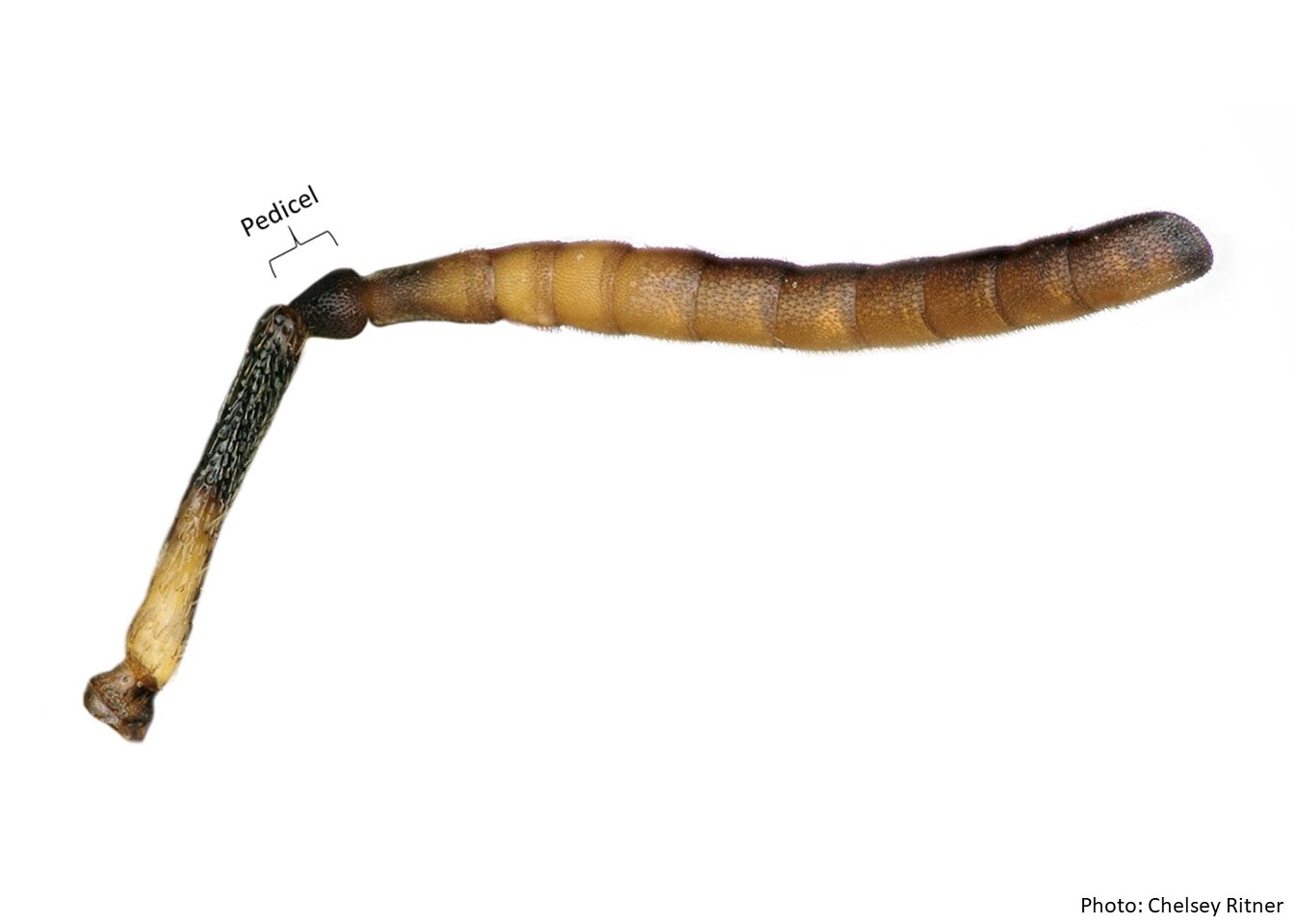 ), whereas male bees have 13 segments.
), whereas male bees have 13 segments.
There are some exceptions to the characters listed above. For example, the tribe Meliponini, which are found in tropical and southern subtropical areas of the world (Michener 2007Michener 2007:
Michener, C.D. 2007. The Bees of the World (2nd ed.). Johns Hopkins University Press, Baltimore and London, 953 pp.), contains stingless females. Further, in rare cases, bees can exhibit both male and female traits. Bees with this condition are either considered gynandromorphs or have been parasitized by Stylops, a minute parasitic insect that can cause androgyny in adult bees. (Images below all taken by Chelsey Ritner.)
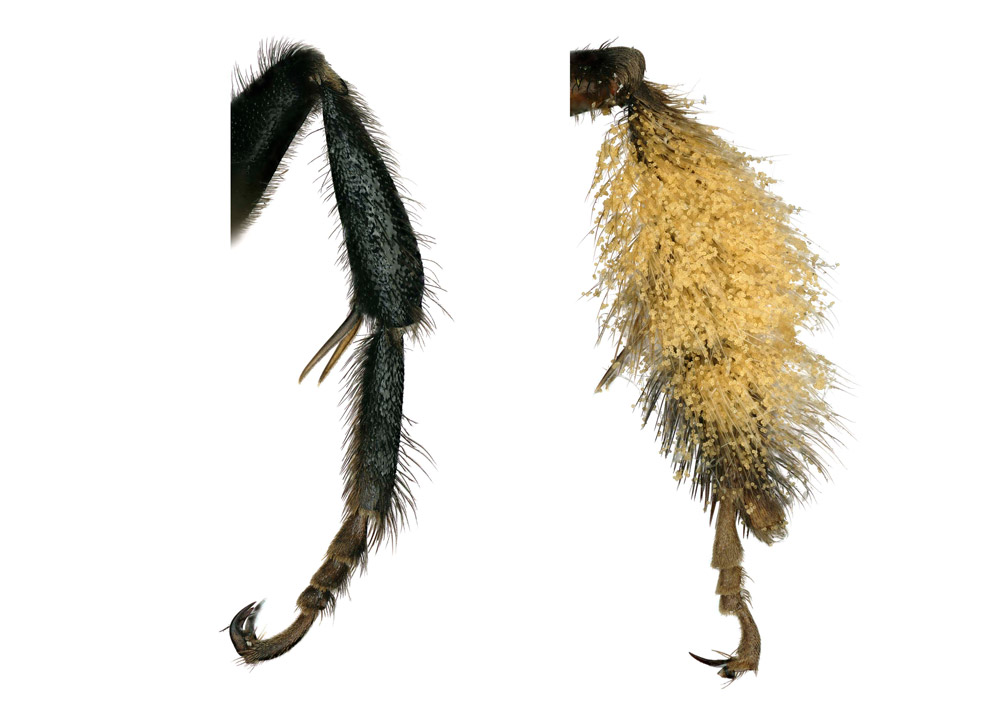
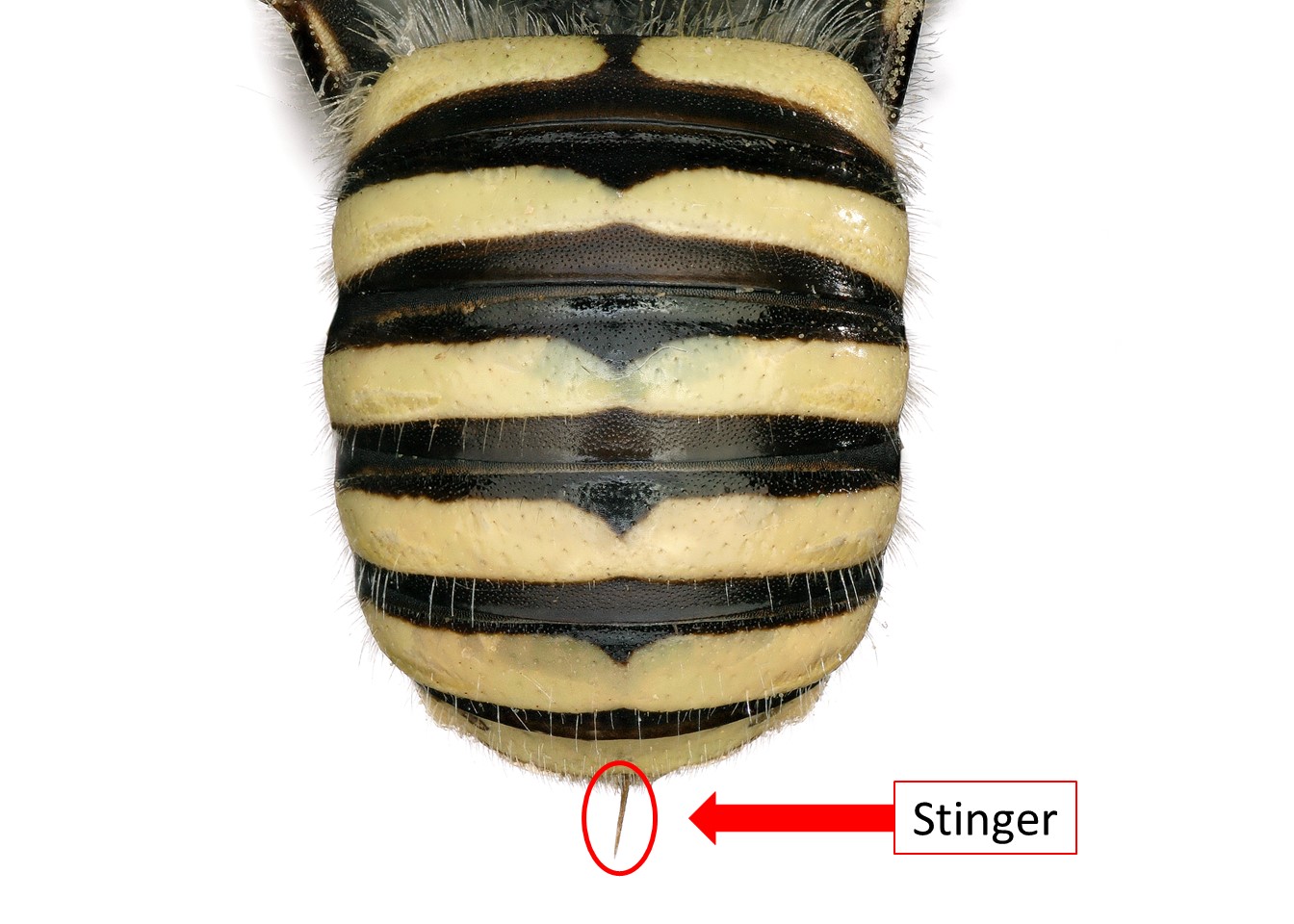
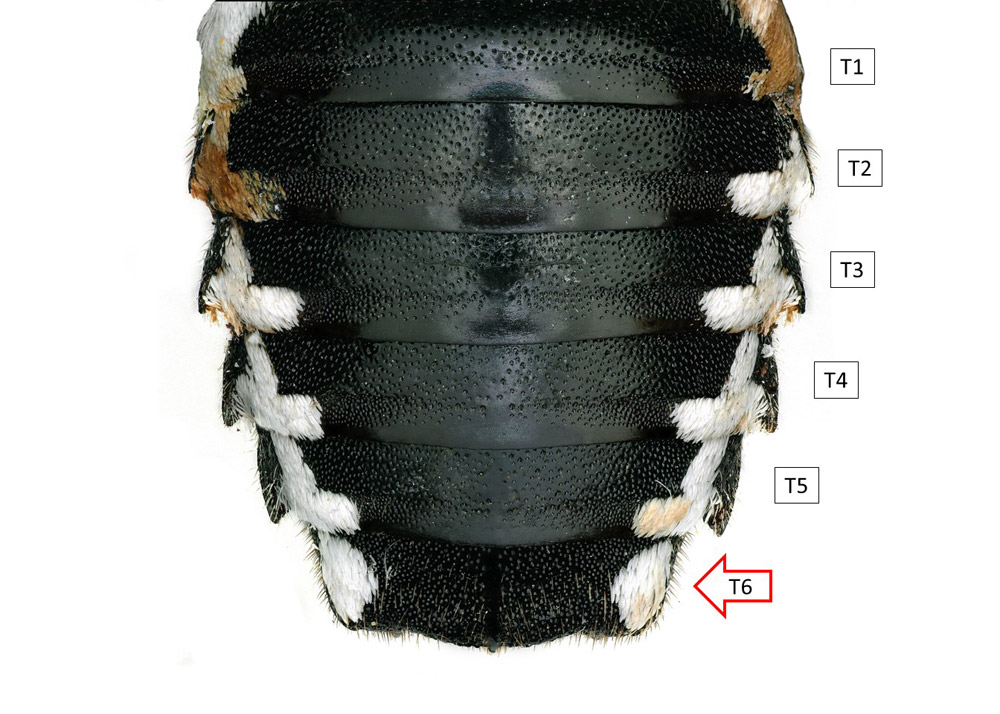
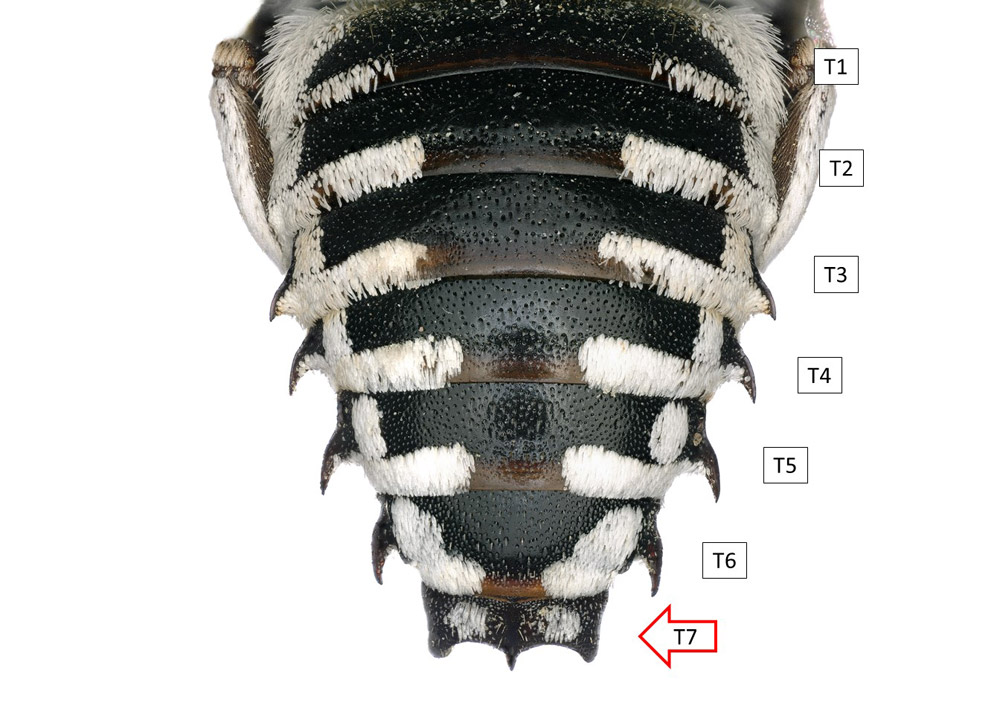
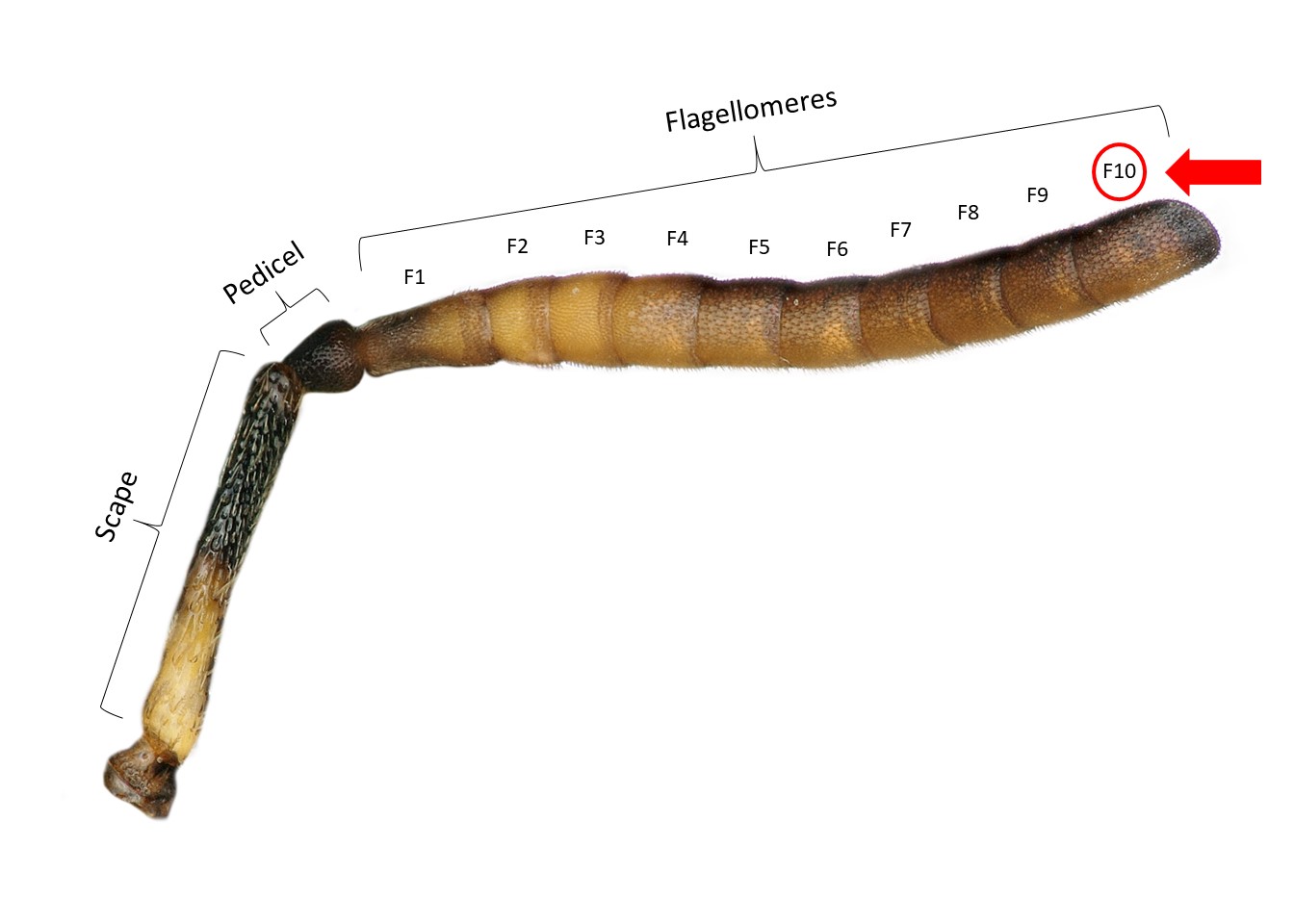
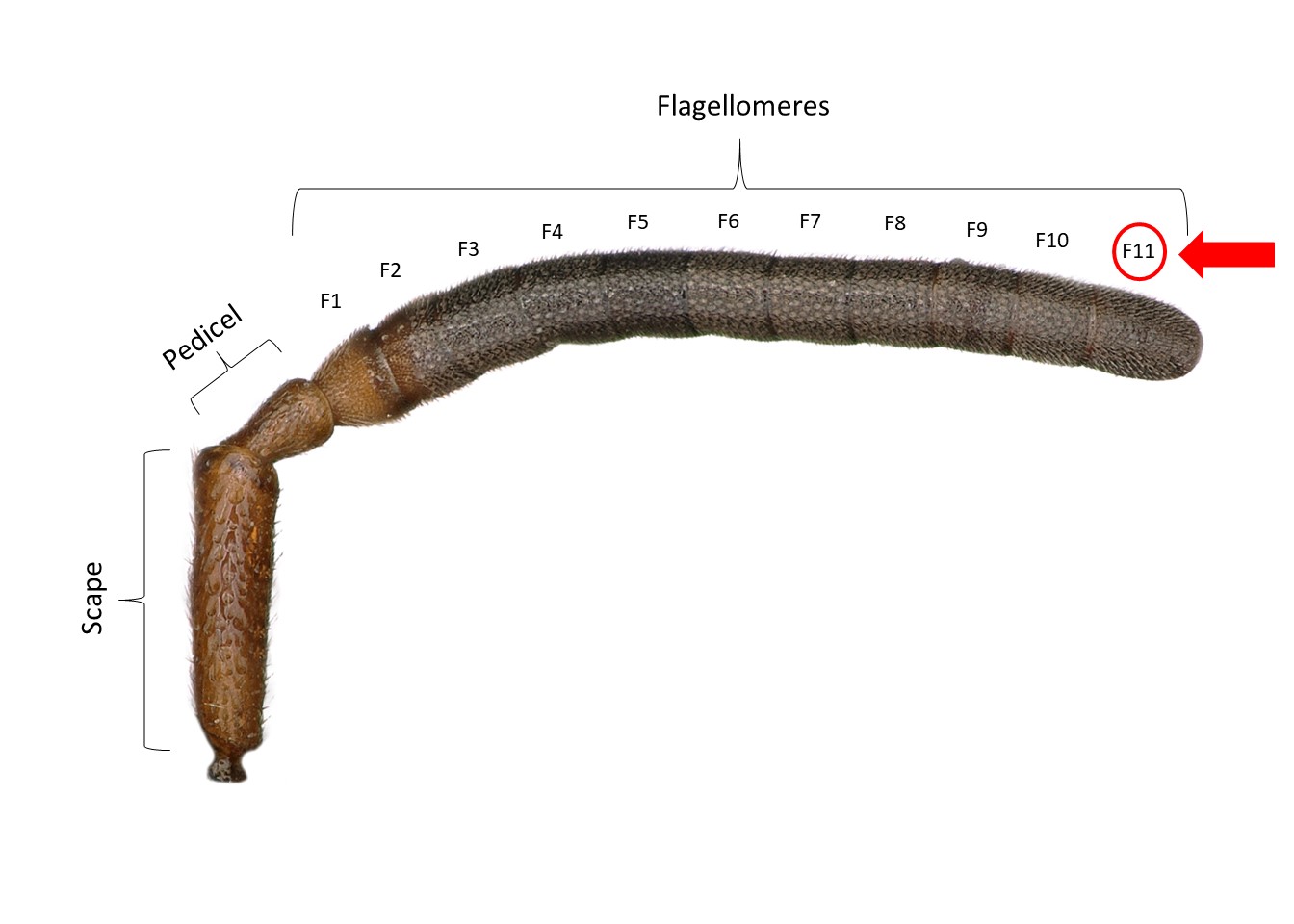
The easiest way to recognize bee larvaelarvae:
active immature form of an insect, especially one that differs greatly from the adult and forms the stage between egg and pupa
is by looking at the associated nest (i.e., its architecture, organization, substrate used, and where it is made). Bee nest cells are provisioned with pollen, but the identification of a bee larvalarva:
active immature form of an insect, especially one that differs greatly from the adult and forms the stage between egg and pupa
to family (or more specific classification) is challenging. Very few researchers have studied the larval forms of bees, so nearly all identification literature is based on adult morphology. Therefore, this tool is designed for identification of adult bees only. For information about larval identification, see Baker et al. (1985), McGinley (1987), Rozen (1973), Rozen and Kamel (2006), and Rozen et al. (2016).
Nests may be used to help identify bees to family or genus. We briefly summarize nests built or used by different families and genera under Biology and behavior and, when available, include photos of nest cells built by certain species and genera in the associated fact sheets.